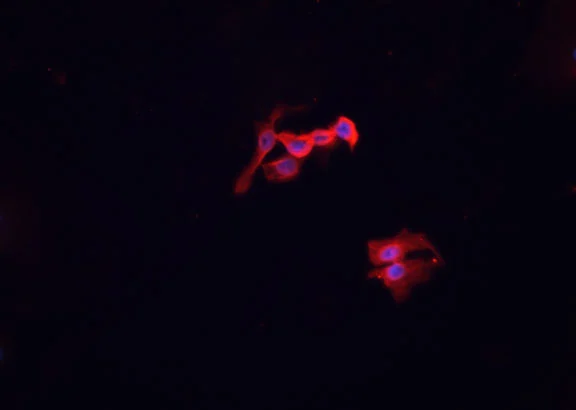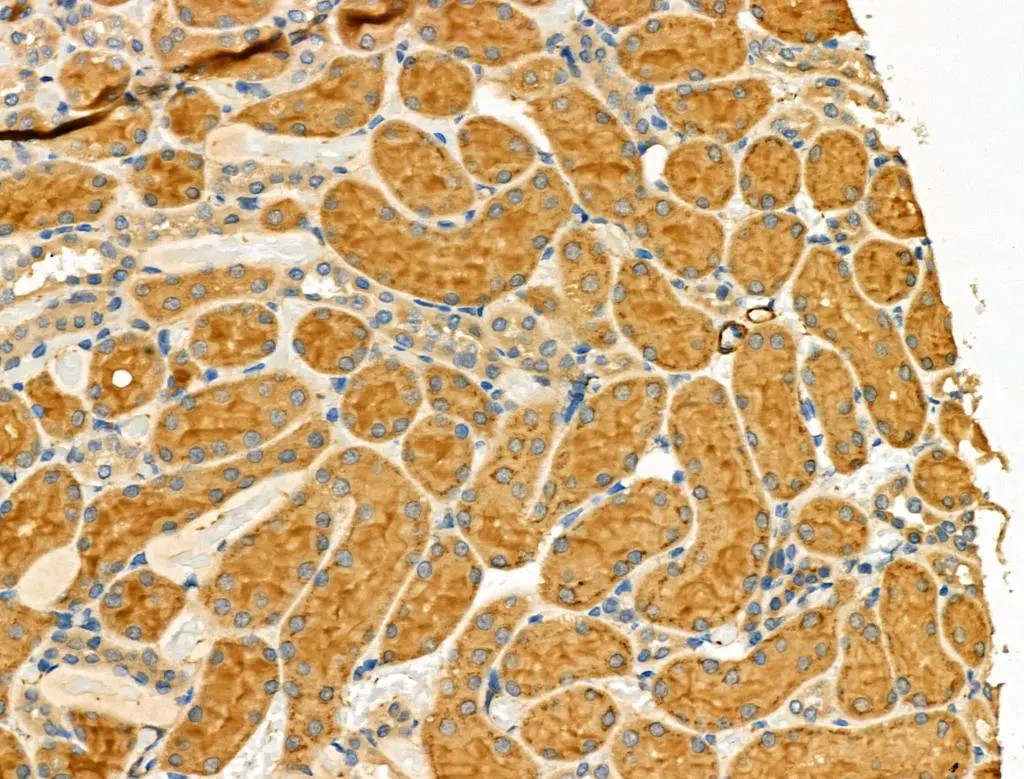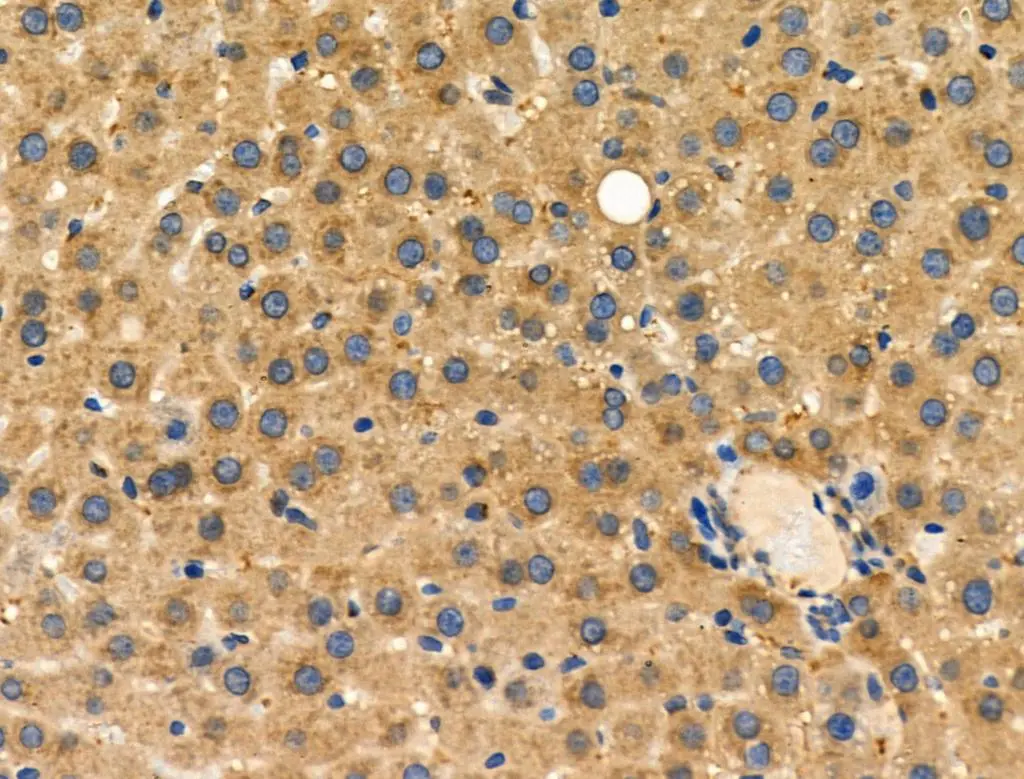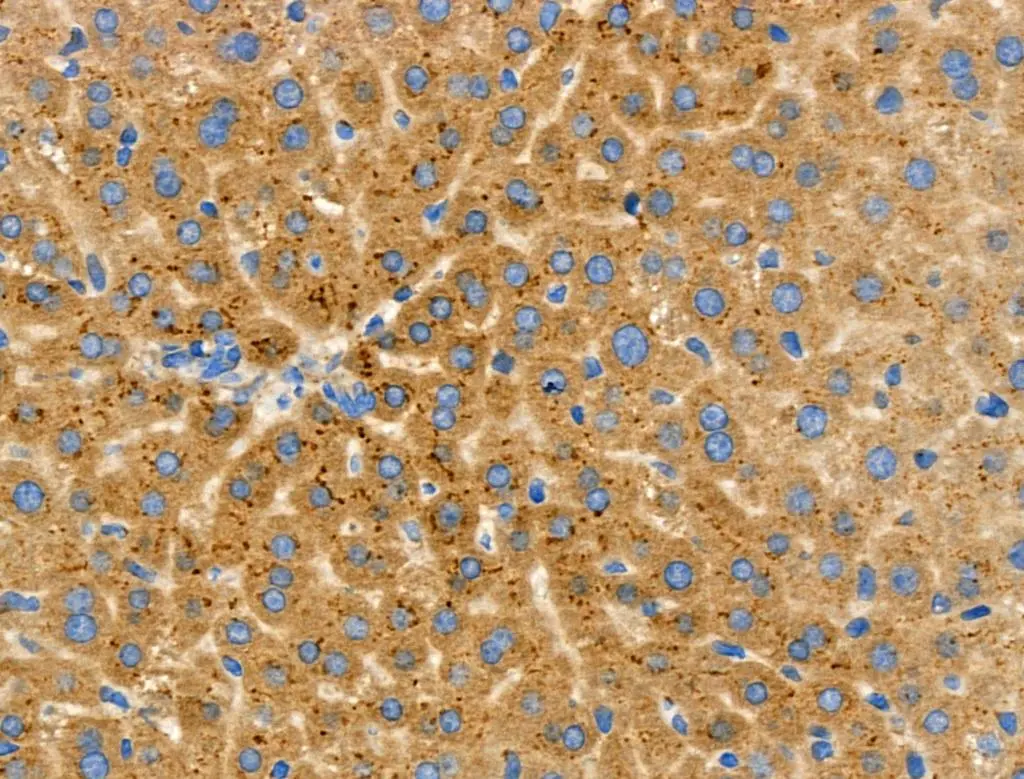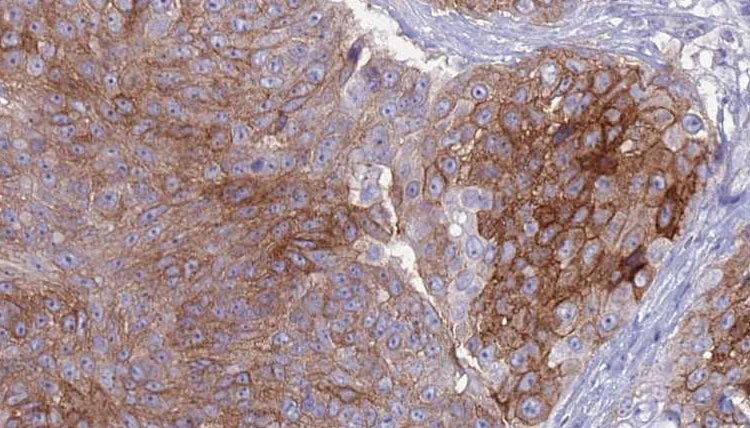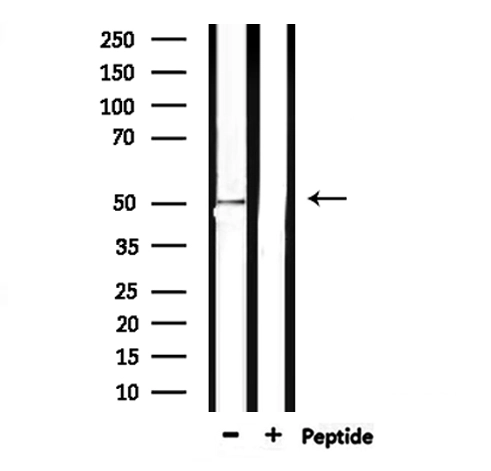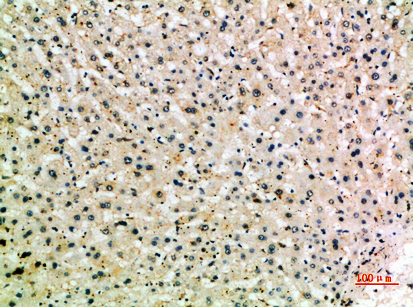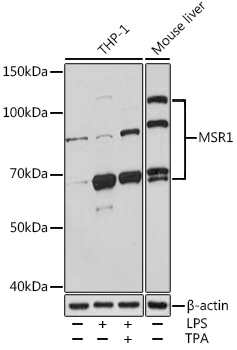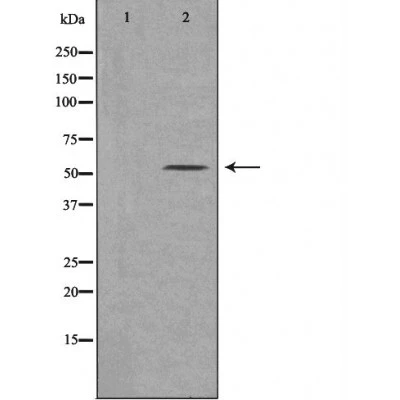
WB analysis of mouse placenta tissue lysate using GTX03371 MSR1 antibody. The lane on the left was treated with the antigen-specific peptide.
MSR1 antibody
GTX03371
ApplicationsImmunoFluorescence, Western Blot, ImmunoCytoChemistry, ImmunoHistoChemistry, ImmunoHistoChemistry Paraffin
Product group Antibodies
TargetMSR1
Overview
- SupplierGeneTex
- Product NameMSR1 antibody
- Delivery Days Customer9
- Application Supplier NoteWB: 1:500-1:2000. ICC/IF: 1:100-1:500. IHC-P: 1:50-1:200. *Optimal dilutions/concentrations should be determined by the researcher.Not tested in other applications.
- ApplicationsImmunoFluorescence, Western Blot, ImmunoCytoChemistry, ImmunoHistoChemistry, ImmunoHistoChemistry Paraffin
- CertificationResearch Use Only
- ClonalityPolyclonal
- Concentration1 mg/ml
- ConjugateUnconjugated
- Gene ID4481
- Target nameMSR1
- Target descriptionmacrophage scavenger receptor 1
- Target synonymsCD204, SCARA1, SR-A, SR-AI, SR-AII, SR-AIII, SRA, phSR1, phSR2, macrophage scavenger receptor types I and II, macrophage acetylated LDL receptor I and II, macrophage scavenger receptor type III, scavenger receptor class A member 1
- HostRabbit
- IsotypeIgG
- Protein IDP21757
- Protein NameMacrophage scavenger receptor types I and II
- Scientific DescriptionThis gene encodes the class A macrophage scavenger receptors, which include three different types (1, 2, 3) generated by alternative splicing of this gene. These receptors or isoforms are macrophage-specific trimeric integral membrane glycoproteins and have been implicated in many macrophage-associated physiological and pathological processes including atherosclerosis, Alzheimers disease, and host defense. The isoforms type 1 and type 2 are functional receptors and are able to mediate the endocytosis of modified low density lipoproteins (LDLs). The isoform type 3 does not internalize modified LDL (acetyl-LDL) despite having the domain shown to mediate this function in the types 1 and 2 isoforms. It has an altered intracellular processing and is trapped within the endoplasmic reticulum, making it unable to perform endocytosis. The isoform type 3 can inhibit the function of isoforms type 1 and type 2 when co-expressed, indicating a dominant negative effect and suggesting a mechanism for regulation of scavenger receptor activity in macrophages. [provided by RefSeq, Jul 2008]
- Storage Instruction-20°C or -80°C,2°C to 8°C
- UNSPSC12352203

